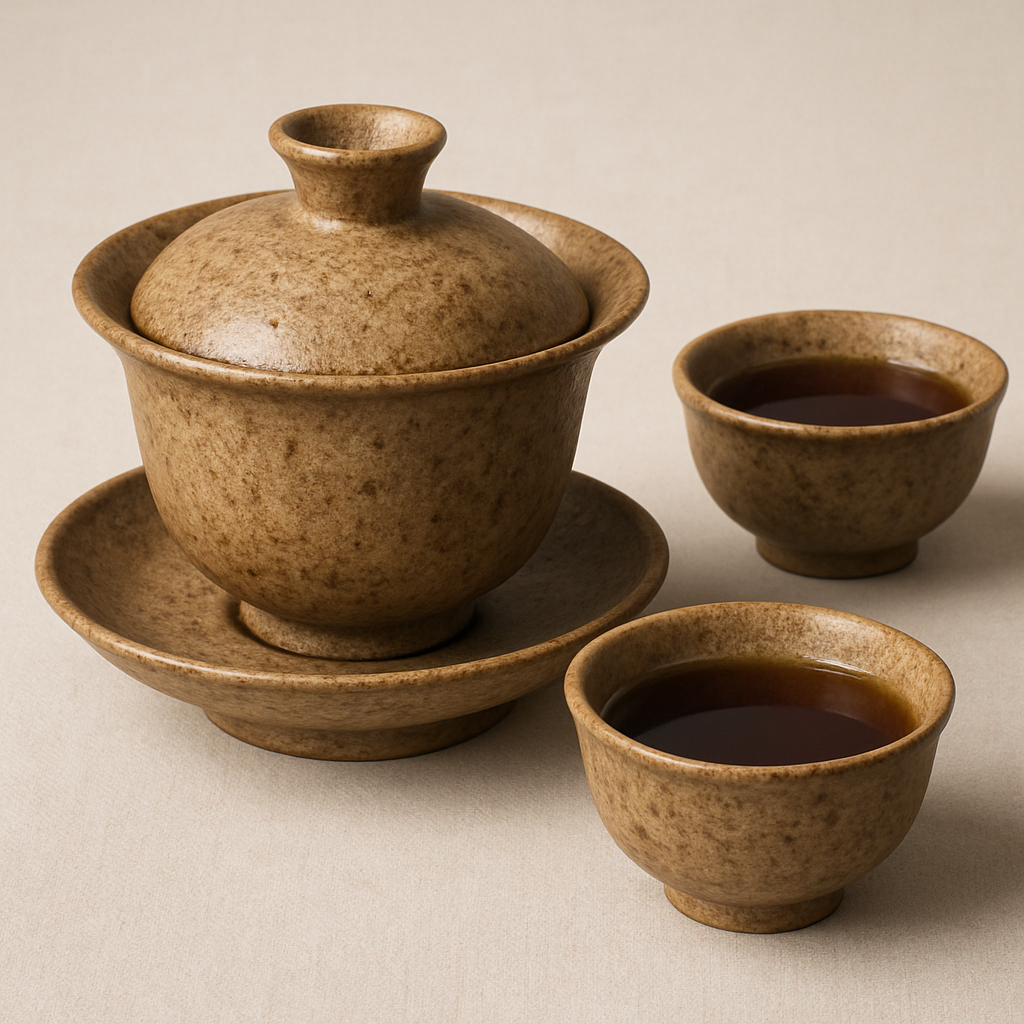14 Can You Drink Directly From a Gaiwan Other Gaiwan FAQs
Tea enthusiasts often find themselves fascinated by the elegant simplicity of traditional Chinese tea brewing methods. One such method involves the use of a gaiwan, a versatile tea brewing vessel that combines a bowl, lid, and saucer. In this article, we’ll delve into the common questions surrounding the gaiwan, including whether you can drink directly from it and other frequently asked questions.

A gaiwan is typically made from porcelain or glass, although other materials like clay are also used. The design is not just aesthetic; it serves a functional purpose by allowing the tea to steep without losing heat and enabling the drinker to control the brewing process precisely.
Can You Drink Directly from a Gaiwan?
The short answer is yes, you can drink directly from a gaiwan. However, it requires some practice to master the technique without burning yourself or spilling tea. Drinking from a gaiwan involves lifting the bowl with the saucer, using the lid to hold back the tea leaves, and sipping carefully from the edge.
The Gaiwan Drinking Method
- Hold the Saucer: Use your thumb and middle finger to grasp the saucer, with the bowl resting on it.
- Tilt the Lid: With your index finger, slightly tilt the lid to hold back the tea leaves.
- Sip Carefully: Bring the edge of the gaiwan to your lips and sip the tea slowly.
This method provides a more intimate tea-drinking experience, allowing you to savor the aroma and flavor of the tea fully. However, many tea drinkers prefer to pour the brewed tea into a separate cup to avoid any spills or burns.
Why Use a Gaiwan?
 Versatility and Control
Versatility and Control
A gaiwan tea set is highly versatile and offers exceptional control over the brewing process. You can easily adjust steeping time, temperature, and tea-to-water ratio to suit your taste preferences. This flexibility makes it ideal for brewing various types of tea, from delicate green teas to robust oolongs.
Enhanced Tea Experience
Using a gaiwan enhances the sensory experience of tea drinking. The open design allows you to appreciate the tea’s aroma, watch the leaves unfurl, and enjoy the visual appeal of the brewing process.
Cultural and Aesthetic Appeal
For many, the gaiwan represents a connection to traditional Chinese tea culture. Its elegant design and historical significance add an element of beauty and mindfulness to the tea-drinking ritual.
How to Use a Gaiwan
Preparing Your Gaiwan
- Preheat the Gaiwan: Rinse the gaiwan with hot water to preheat it. This helps maintain a consistent brewing temperature.
- Add Tea Leaves: Place the desired amount of tea leaves into the bowl. A general guideline is one teaspoon per 100ml of water, but this can vary based on personal preference and tea type.
Brewing the Tea
- Pour Hot Water: Add hot water to the gaiwan, ensuring the leaves are fully submerged. The water temperature will depend on the type of tea being brewed.
- Steep and Swirl: Cover the gaiwan with the lid and let the tea steep for the recommended time. Swirl the gaiwan gently to agitate the leaves and enhance the infusion.
- Pour or Sip: You can either pour the tea into a separate cup using the lid as a strainer or drink directly from the gaiwan, as previously described.
Do You Need a Tea Strainer with a Gaiwan?
While a gaiwan can be used without a tea strainer, some people prefer to use one to ensure a clear brew. If you choose to pour the tea into a separate cup, using the lid as a makeshift strainer will typically suffice. For those who wish to remove all leaf particles, a fine mesh strainer can be used when pouring the tea.
What Types of Tea Can Be Brewed in a Gaiwan?

A gaiwan is suitable for brewing a wide range of teas, including:
- Green Tea: The gaiwan’s design helps maintain the delicate flavors of green tea.
- Oolong Tea: The versatility of the gaiwan allows for the varied steeping required by different oolong teas.
- Black Tea: While less common, some black teas can also be brewed in a gaiwan to appreciate their robust flavors.
- White Tea: The gentle brewing process highlights the subtle notes of white tea.
Common Mistakes to Avoid
Overfilling the Gaiwan
Filling the gaiwan to the brim can make it difficult to handle and increase the risk of spills. Aim to fill it about 70-80% full to allow room for handling and for the leaves to expand.
Using the Wrong Water Temperature
Different teas require different water temperatures. Using water that is too hot can scorch delicate leaves, while water that is too cool may not extract the desired flavors. Be sure to adjust the temperature based on the tea type.
Steeping for Too Long
Oversteeping can lead to a bitter brew. Follow recommended steeping times and taste the tea to determine when it’s ready to pour or sip.
Conclusion
A gaiwan is a versatile and elegant tool for brewing tea, offering control and enhancing the overall tea-drinking experience. While you can drink directly from a gaiwan, it requires practice and caution. Whether you’re a seasoned tea enthusiast or new to the art of tea, using a gaiwan can elevate your appreciation for this timeless beverage.
By understanding the basics of gaiwan use and avoiding common pitfalls, you can enjoy a rich and rewarding tea experience. Happy brewing!